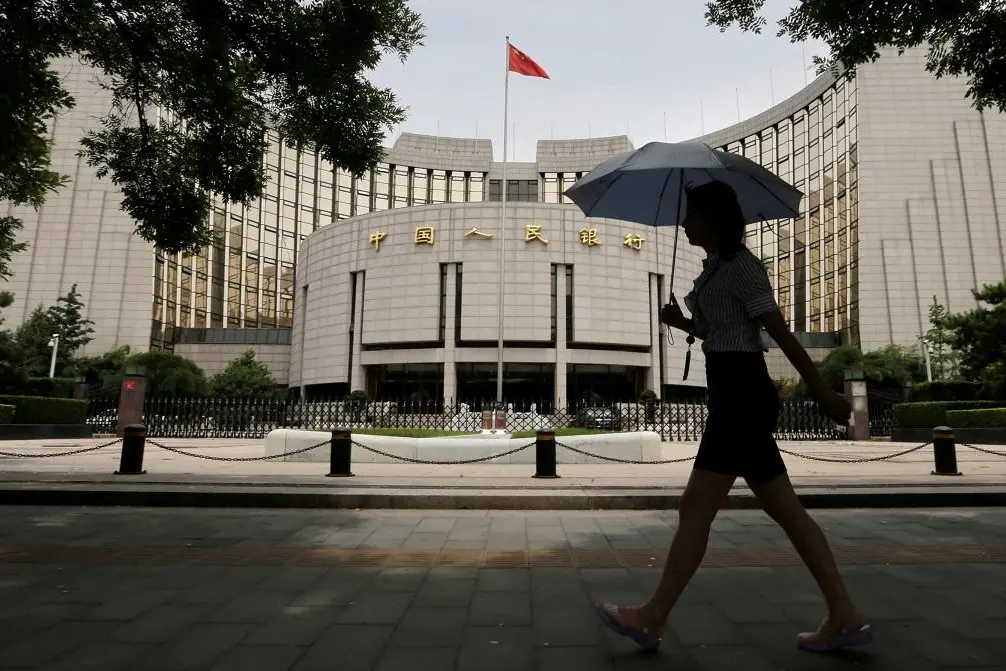PHOTO
BEIJING - China should appropriately cut banks' reserve requirement ratios (RRR) to help ease their burdens, the central bank said in a working paper on Tuesday, fanning expectations of an imminent policy move to support the economy as U.S. trade threats grow.
Fears of a full-blown trade war have added to concerns about the outlook for the world's second-largest economy, following weaker-than-expected growth data for May as a three-year regulatory crackdown starts to weigh on business activity.
The People's Bank of China surprised markets earlier in the day by lending 200 billion yuan ($31 billion) to financial institutions via its medium-term lending facility (MLF), highlighting concerns over liquidity and the potential economic drag on trade.
The injection of funds came just hours after U.S. President Donald Trump escalated the tit-for-tat trade scrap with Beijing by threatening to impose a 10 percent tariff on $200 billion of Chinese goods.
China's clampdown on off-balance sheet financing activities have put pressure on banks, and authorities have moved to curb a debt build-up at local governments and companies, the PBOC said in the working paper published on its website."China should appropriately reduce its reserve requirements to ease burdens on financial institutions and smooth the interest rate transmission mechanism," it said.
"While financial market risks have been effectively released, banks' capital adequacy and reserves face obvious constraints," it added.
However, as China is still a developing country, it is still necessary to keep the RRR at relatively high levels, it said.
The PBOC in April unexpectedly cut reserve requirement ratios (RRR) for most banks by 100 basis points (bps), in a move that was earlier and more aggressive than expected, highlighting concerns over liquidity conditions and the potential impact of punitive U.S. trade measures.
Many analysts had expected further RRR cuts in coming months as China's economic growth starts to cool under pressure from rising borrowing costs and a regulatory crackdown on riskier lending practices, which have sparked a small but growing number of credit defaults.
Among other recent support measures, authorities have raised lending quotas for state-ownedbanks, the China Daily reported last week, citing unnamed sources.
Economists at Nomura say there is a good chance of another 100 bps RRR cut this month or next, and also predict the central bank will provide more direct funding to the market via various channels. But they believe the PBOC will "most likely" keep policy rates unchanged.
Last week, the PBOC decided not to follow a rate rise by the U.S. Federal Reserve with even a symbolic increase in short-term rates -- a break from its recent practice -- signalling that some policy fine-tuning is in the offing, analysts told Reuters.
RATES TO BE GRADUALLY UNIFIED
The PBOC working paper also said it was urgent to transform China's monetary policy from a reliance on quantitative, liquidity tools such as RRR and various lending schemes to price-based methods, referring to market rates.
It added that authorities will gradually unify market interest rates, deposit and lending rates, reiterating past pledges without giving a timeframe.
But it conceded that monetary policy transformation cannot be achieved overnight.
The central bank should also increase its tolerance for fluctuations in the yuan's exchange rate and quicken market-based currency reforms, the paper said.
The PBOC has published three working papers so far this year, compared with five in all of 2017.
(Reporting by Beijing Monitoring Desk and Kevin Yao; Editing by Kim Coghill)
© Reuters News 2018












